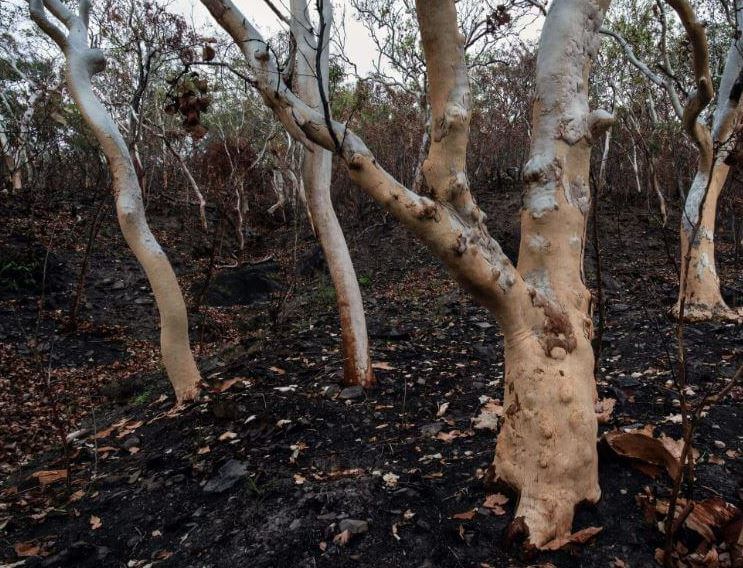Coming to the end of Black History Month, a new study calls attention to the relevance and critical value of Indigenous fire management in this era of heightened risk of harm to our fire-prone nation.
Recent fire crises that swept through areas of ecosystems where bush fire has historically been rare or unheard of have raised questions about fire management and land-cover change since British invasion.
Now, new evidence offers insight into how the displacement of Indigenous peoples and their purposeful use of cultural burning has affected forestt fuel loads, with consequences for fire risk, animal extinction and biodiversity loss.
The study found that forests and woodlands now contain more shrub cover and less grass than they did prior to British colonisastion, an ecological consequence of the suppression of Indigenous land management practices. Data went on to suggest “increased shrubbiness, in conjunction with climate change, may have exacerbated wildfires.”
The increased density of shrubs in the understorey allows fires to reach tree canopies more often, setting off high-intensity “crown” fires like those of 2019-20.

So, what is cultural burning, and can the loss of an Indigenous landscape be restored?
Cultural burning, the contemporary term to define Indigenous fire management, applies culturally informed knowledge and ecologically conscious techniques specific to the targeted landscape and its wildlife. The practice carried out by Indigenous custodians, or people given their permission and guidance, primarily involves ignition of low-intensity fires during early dry season.
The fires burn slowly in a method of patch burning which reduces fuel loads and creates ‘fire breaks’, strips of burnt and unburnt country, purposely designed to stop or control the spread of fire and make room for wildlife to escape. Landscapes managed in this way are less likely to experience destructive fires.
Protecting the tree canopy is deemed key in cultural burning, as it is considered a fundamental resource in homing species’ as well as providing shade that prevents the soil and understorey from drying out. Fire is also used to gain better access to land, clear pathways, manage weeds and to maintain cultural responsibilities.
In contrast, colonial land management referred to as prescribed burning typically involves ignition of intense, petrochemical-accelerated fires to create large patches of thoroughly burnt land, especially in the vicinity of agricultural activities, particularly low-level grasslands. Forests in rocky and hilly areas, on the other hand, are often left unmanaged and utilised for logging.
Other methods include mechanical thinning in attempt to reduce shrub layers. The new research found that “the current dense understory shrub layer is novel in the woodlands and forests of southeast Australian within the past 1000 years. Thinning this layer, through mechanical means or via cultural burning could restore a vegetation structure more characteristic of pre-colonial times, when biomass burning was more stable.”
As of 2022, Australia still has no National Bushfire policy, as different states employ different policies and priorities based on local approaches. In light of the Black Summer fires, there is now more urgency for regular active land management that incorporates Indigenous leadership and reignites Indigenous peoples’ cultural connection to the land.
Recognising, implementing and passing on such knowledge and understanding in preserving a sustainable landscape would influence the shape of Australia for generations to come.
Follow Christian on Twitter for more news updates.
Feature Image: Courtesy of @rajwar_deep via Pexels.
Sign Up To Our Free Newsletter